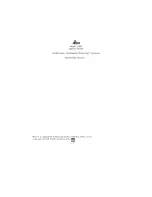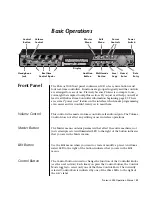
There it’s available as modulation source. In the Source 2 column, the pulse signal of VCO2
of the neighbouring voice is inserted in the routing element of thr active voice.
The voices modulate eachother in a cyclic way, which means that voice 1 modulates voice 2,
voice 2 modulates voice 3 etc. Voice 8 modulates voice 1. This way, all 8 oscillators modulate
eachother.
The resulting sounds often have a chaotic character due to the complexity of the modulation.
This often results in a noise-alike sound, which sounds completely different than the internal
noise generator. It can very well be used to spectacular and strange effects.
Key-Voltage
Another feature we hardly mentioned up to now, is the
VCO 1 KV
and
VCO 2 KV
entry in
the routing elements list. In an analogue synthesizer, the VCO’s are controlled by control
voltages. The higher the voltage which the keyboard (or midi controller) transmits, the higher
the pitch (frequency). The most common relation between control voltage and pitch, is the
octave/Volt-scale. In this scale, one octave corresponds to a voltage increase of 1 Volt (an expo-
nential relation with pitch as reference). The lowest note is C-1 which corresponds to zero Volt.
The control voltage which is produced
by playing a key, is now available for
modulation purposes in the routing
element. This way, you can modulate
parameters depending on the pitch.
When selecting controller as modifier
and VCO FM as destination, you can
define an arbitrary scaling. You can
deviate from the standard scaling and
create any possible scaling. You can also
use a different scaling per routing
element. This way, when playing
monophonic, you’ll produce different intervals. Interesting effects can also be produced by
combining this feature with the LFO’s as modifier. Have fun and experiment!
Routing Elements
3-10
064
Single Mode
Scaling
c1
c2
c3
c4
c5
5
Pitch
Control Voltage (V)
4
3
2
1
thebook-all 07.11.2002 18:28 Uhr Seite 64 (Schwarz Bogen)












































